December 4, 2025
A data-backed breakdown of the real comment patterns driving ad performance in 2025.
Aug 20, 2025
10 min read
Learn how SaaS company Jobber turned their high-volume ad comment sections into a powerful revenue driver.

We audited the Jobber's (a fast-growing SaaS brand for home service businesses) Meta strategy of to uncover something many performance marketers overlook: engagement. Specifically, the comment section in paid social. And the best part? It's relevant for SaaS, Ecommerce, and D2C/B2C teams, so listen up.
While most brands obsess over creative, targeting, and budget optimizations, few pay close attention to what happens after the ad is live—in the threads where real people react, ask, doubt, and decide.
The Superpower team analyzed hundreds of comments across Jobber’s top-performing Meta ads acorss Instagram and Facebook to answer a question every ecomm, SaaS, and B2C founder should be asking:
Is your brand capitalizing on the engagement your ad dollars are driving?
Here’s what we found—and why it matters for sales, ROAS, and conversion efficiency in ecommerce and direct-to-consumer.
Here's a hint: comment moderation and monitoring across your social 24-7/365 matters.
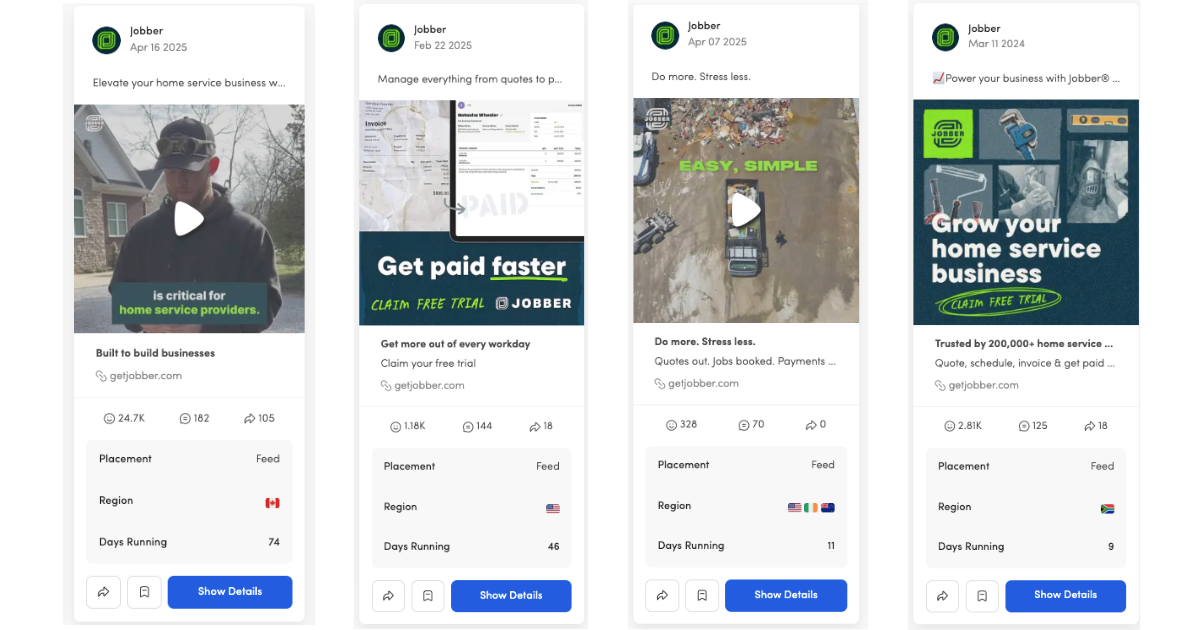
Jobber invests heavily in Meta ads. Their campaigns attract some of the highest levels of engagement we’ve ever tracked, especially in terms of comment volume. That’s good news for brand awareness, but the more compelling insight was what those comments actually contained, and how Jobber handled them.
We identified key patterns in how engagement affects outcomes like conversions, trust, and overall paid performance.
For ecommerce and D2C brands running offer-led or product-driven campaigns, the takeaway is clear: Your comment section isn’t just a social metric—it’s a revenue channel.
Across three top-performing ad sets, we recorded:
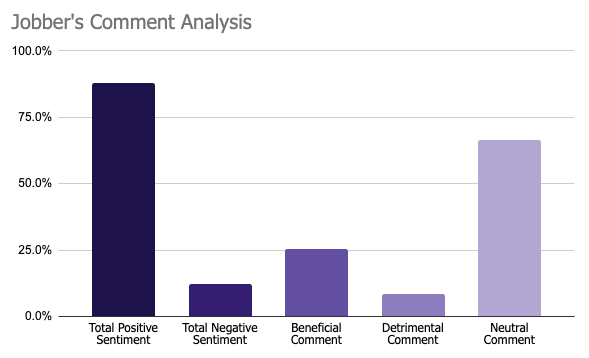
That’s a powerful signal of brand resonance. Jobber’s Meta ads sparked conversation, community participation, and even unsolicited advocacy from users jumping in to answer each other’s questions.
But we also noticed a clear gap between engagement and response (especially where high-value comment types were involved).
There was a strong inverse correlation between the number of comments on an ad and how often the brand replied:
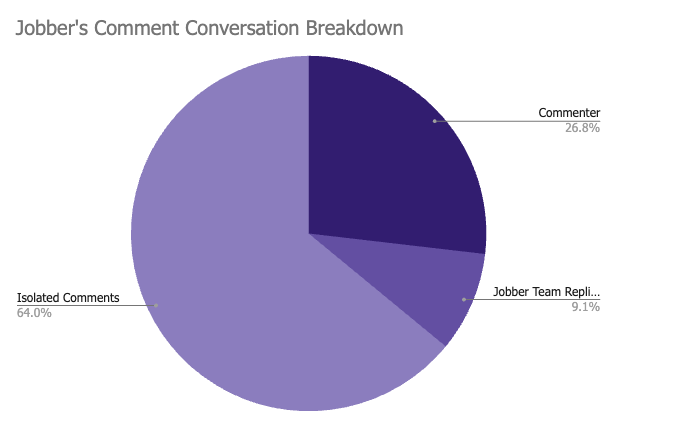
This is a crucial lesson for D2C/B2C and ecomm teams investing in scale. As paid campaigns succeed and engagement grows, your ability to respond needs to scale too...or you risk leaving conversions and trust on the table. Not only that, but the speed to which to reply to this engagement really matters.
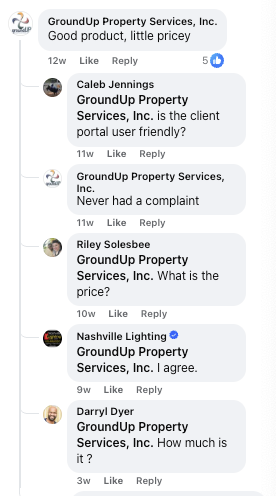
Many of these comments were sales-qualified leads in disguise, with users asking about integrations, pricing, or how to get started.
💡 Ecommerce and D2C Opportunity: Assign comment management during key launches or sales periods. Responding at scale turns intent into revenue and improves Meta's perception of ad quality, which which can boost delivery, Improve ROAS, and lower CPMs.
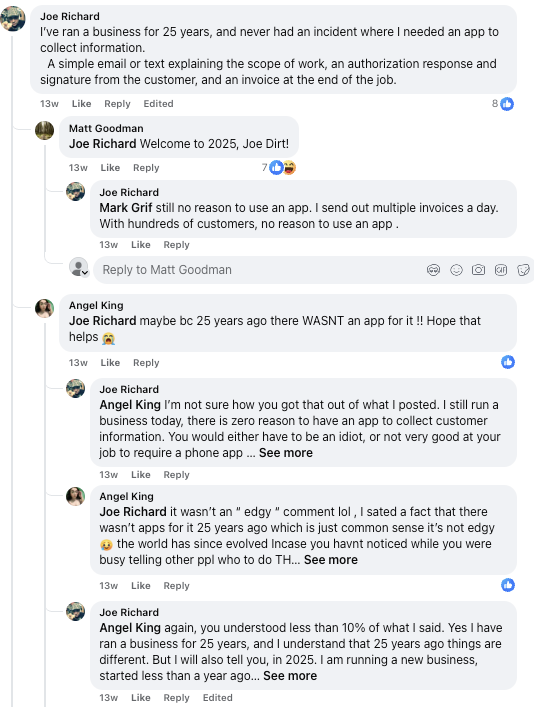
A remarkable 88% of all paid social comments were classified as positive. That means most people engaging with Jobber’s ads were either already fans or excited prospects.
But only 9% of those positive comments received any response from the brand.
This creates missed opportunities to:
For B2C and ecommerce brands, this is where ROI gets compounded. Every positive comment is a chance to:
💡 Direct to Consumer Opportunity: A quick “Thanks, appreciate it!” or emoji-based reply helps scale social proof and indirectly boosts ROAS by improving click-through rates and conversions.
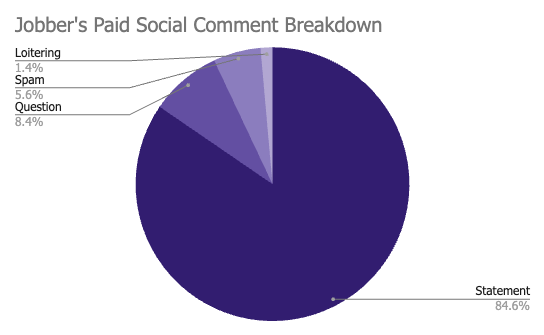
Only 9% of comments were questions—but they were by far the most sales-ready. They included:
These are clear indicators of purchase intent. But Jobber replied to just 30% of them—and only on ads explicitly promoting free trials.
For ecomm owners and marketers, these are the equivalent of “Do you have this in my size?” or “Is shipping free?” If someone’s asking in your comments, they’re halfway to checkout.
💡 Ecomm Opportunity: Set alerts or filters to flag questions on ads. Fast response = faster sales. Even a delayed answer is better than letting a buyer go cold or worse, turn to a competitor in-thread.
We studied how engagement quality varied across two successful creative types:

Interestingly, Jobber was far more responsive on the offer-led ads, perhaps due to the clearer sales pipeline. But both ad types offered different benefits: one built momentum, the other drove conversions.
💡 B2C /D2C Opportunity: Use personality-driven content for reach and engagement. Then retarget warm audiences with conversion-focused creatives—and manage comments across both for full-funnel efficiency.

Roughly 7% of comments were spammy or promotional in nature. These included:
While small in volume, these comments carry outsized weight in the eyes of consumers—and Meta’s algorithms.
Unchecked, they undermine trust, hurt your conversion rate, and signal lower quality to Meta, which can throttle delivery and raise CPMs.
💡 B2C Product Opportunity: Instant comment moderation on Paid Social (with tools like Superpower) helps protect your ROAS and ensures every ad dollar is reinforcing—not eroding—your brand equity. Of course, you can manually hide Facebook Ad comments, but someone needs to be watching them like a hawk constantly.
One of the most powerful insights? 25% of comments contained valuable content that could be reused across the marketing funnel:

By contrast, only 9% of comments were clearly negative, and even those presented a chance to respond publicly and show transparency.
💡 Sales Opportunity: Mine comments for new ad hooks, email copy, and product page testimonials. Better yet—turn recurring questions into FAQs, and recurring praise into remarketing material.
Jobber has built a community that shows up. Their ads spark real conversations. This is something many brands only dream of. But as they scale, their ability to meet engagement with strategy hasn’t kept up.
And that’s the case for many direct-to-consumer and ecomm brands too.
Every ignored comment is a missed sale, a lost testimonial, or a brand moment left hanging.
If you’re running Meta at scale, the next performance lever might not be your creative. It might be your comment section.
To increase ROAS and get more from your paid social strategy, don’t just buy attention, convert it, protect it, and amplify it.
Stop trolls, spam, and competitor comments from tanking your conversion rate as quickly as possible. You'll be glad you did.

Explore expert tips, industry trends, and actionable strategies to help you grow, and succeed. Stay informed with our latest updates.